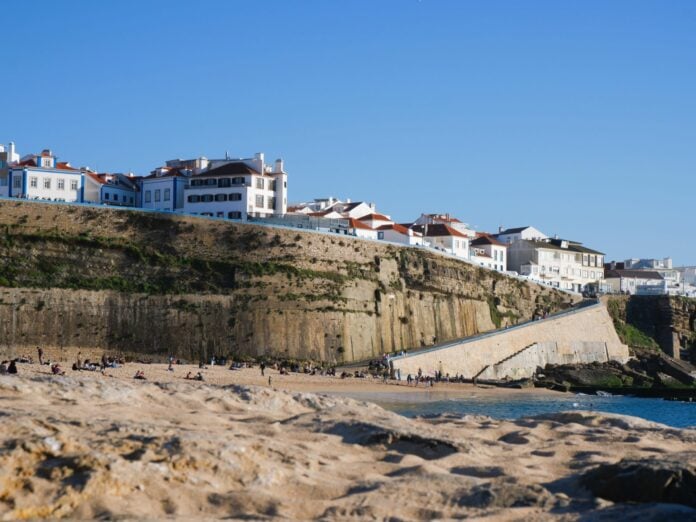Lisbon, Porto, Coimbra, Braga, Evora, and Sintra – these cities are undeniably beautiful. But they’re also very crowded, especially during the summer. So, if you want to escape the bustling crowds during your stay in Portugal, we’re here to help! We’ve selected the most charming villages and small towns in Portugal for you to enjoy some peace and quiet.
This country is a treasure in itself, and it’s up to us to discover it every step of the way. Imagine wandering through the cobblestone streets of Monsaraz and watching the sunset cast a golden glow over the surrounding landscape! Or picture yourself in Piódão, embraced by views you’ll never see elsewhere!
Keep reading to discover more about 17 must-see villages and small towns in Portugal!
1. Palmela
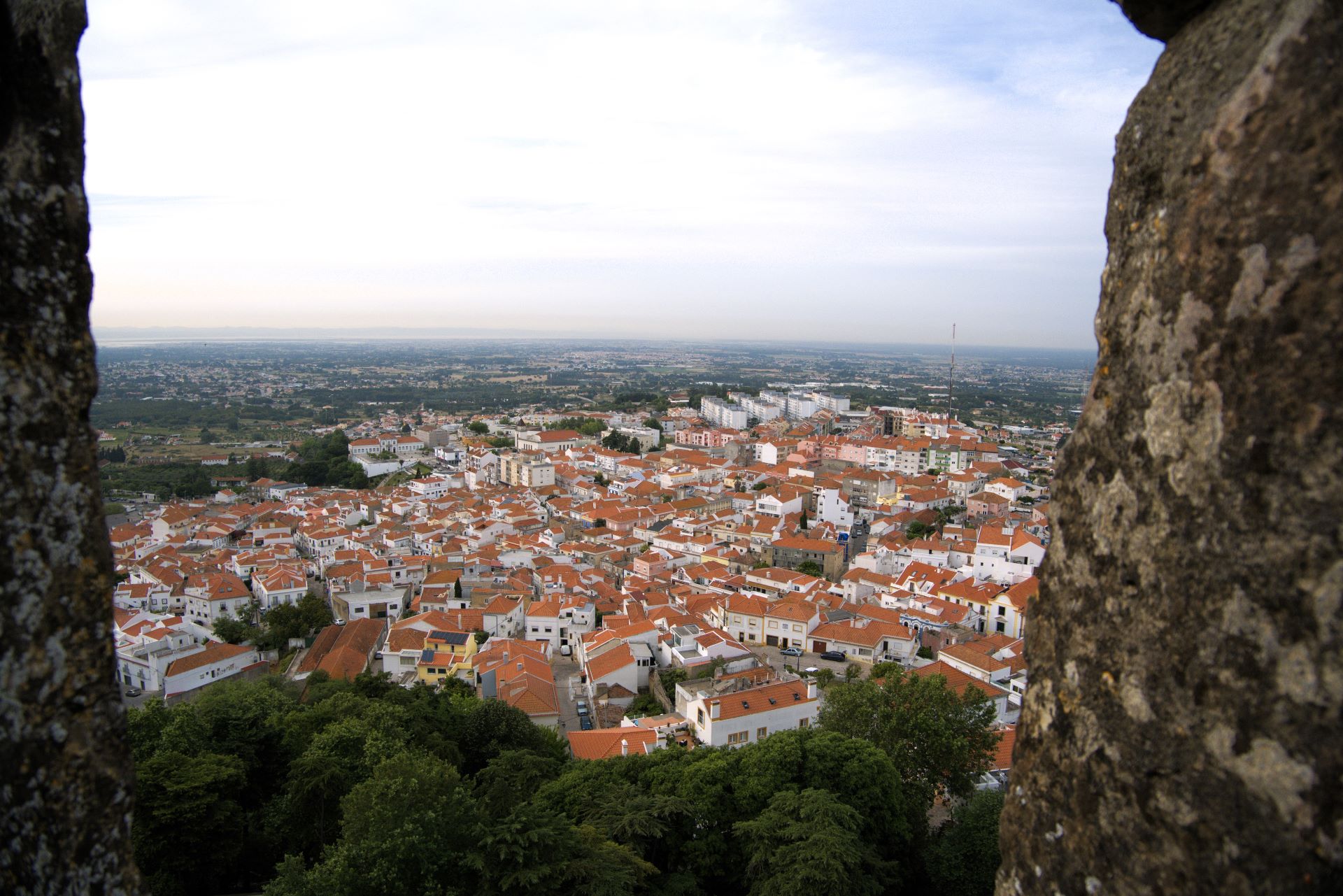
Palmela is located about 40 kilometers south of Lisbon in the Setúbal District. Its history dates all the way back to Neolithic times, and there’s evidence of early settlements in nearby caves!
The town’s crowning jewel is the Palmela Castle, perched atop a hill nearly 250 meters above sea level. However, there’s so much more to see while walking to the castle – keep in mind that the city is quite hilly and a 20-minute walk may take 40 minutes, but the views from the top more than make up for the struggle!
The narrow streets lined with historic buildings guarantee a truly authentic experience. The city is usually very peaceful, as there aren’t too many tourists in the area, so you can enjoy the walk at your own pace, discovering Palmela’s hidden treasures! Once you reach the castle, you’ll delight in breathtaking views of the surrounding landscape.
Before going to Palmela, make sure to check the Camara Municipal de Palmela website – there are usually a lot of events happening in the city, so maybe you can find something you’d enjoy during your stay there.
2. Ericeira
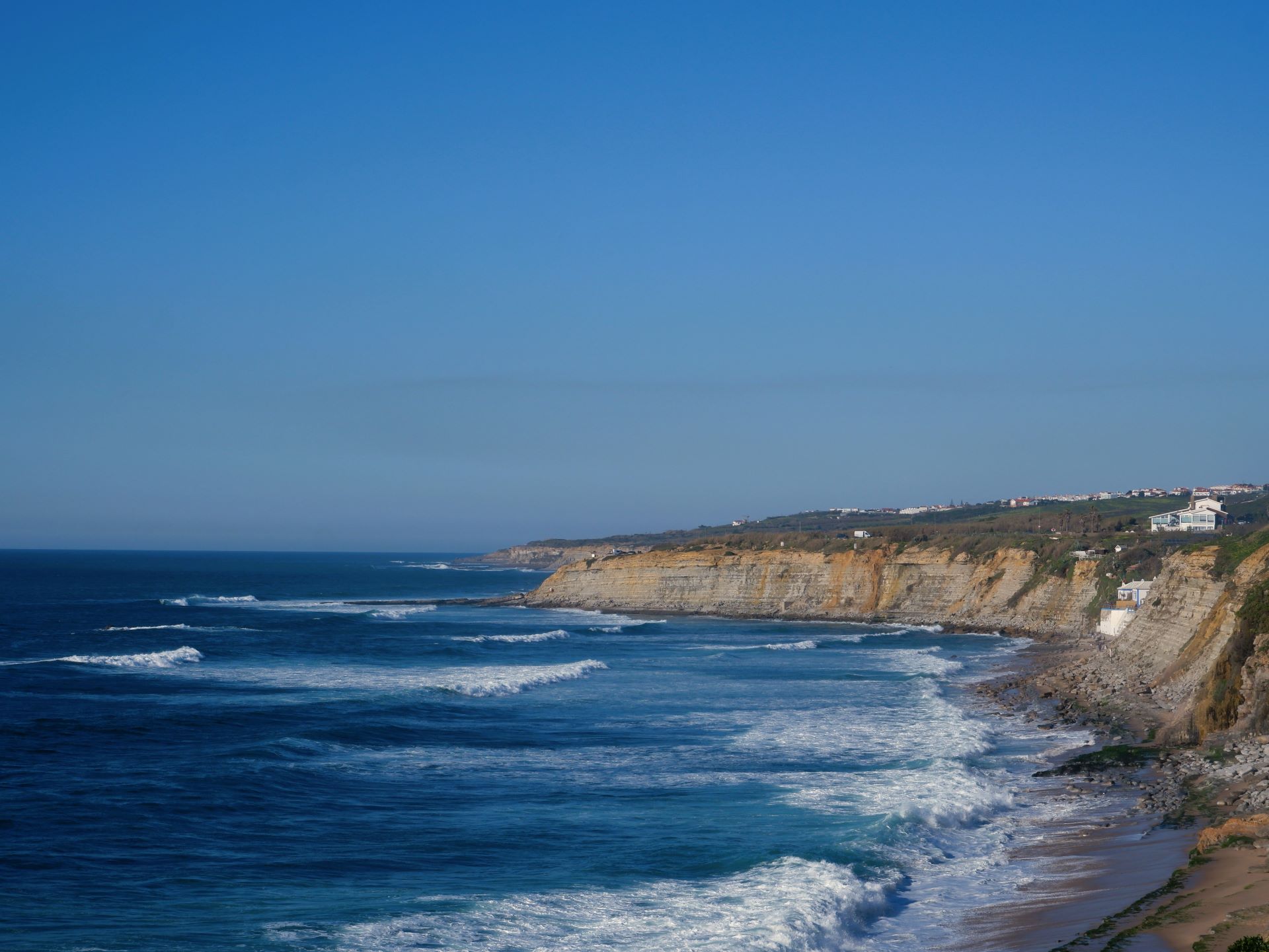
Ericeira is a picturesque coastal town located about 35 kilometers northwest of Lisbon in the municipality of Mafra. Historically, it was an important fishing port and played a significant role in Portugal’s maritime trade.
Today, Ericeira is world-renowned as a surfing destination – in fact, it’s Europe’s only World Surfing Reserve besides the other European reserve in the UK.
If you’re not a surfer, that’s not an issue. There are plenty of breathtaking ocean views and spectacular sunsets you can catch there! In fact, the sunsets in Ericeira are quite a thing, as locals and tourists gather in a particular spot in the city (you’ll know it when you see it!) to watch the sunset. Prepare for a truly once-in-a-lifetime experience!
And the city – with its white houses outlined in blue and topped with red roofs – is enough in itself to make your trip to Portugal memorable. Ericeira is also famous for its seafood restaurants, offering fresh catches from the Atlantic Ocean.
3. Belmonte
Belmonte is a historic town in central Portugal in the Castelo Branco District. It is renowned as the birthplace of Pedro Álvares Cabral, the Portuguese navigator who discovered Brazil in 1500.
History enthusiasts should visit the Castle of Belmonte, a well-preserved medieval fortress that offers panoramic views of the surrounding countryside. Belmonte is also known for its Jewish heritage documented in the Belmonte Jewish Museum.
Since the city is in the Serra da Estrela region, known for its cheese production, you can also enjoy some local Serra da Estrela cheese, a creamy delicacy made from sheep’s milk. All in all, this is an all-inclusive trip – history, culture, nature, and gastronomy – packed into just one trip to Belmonte!
4. Monsanto
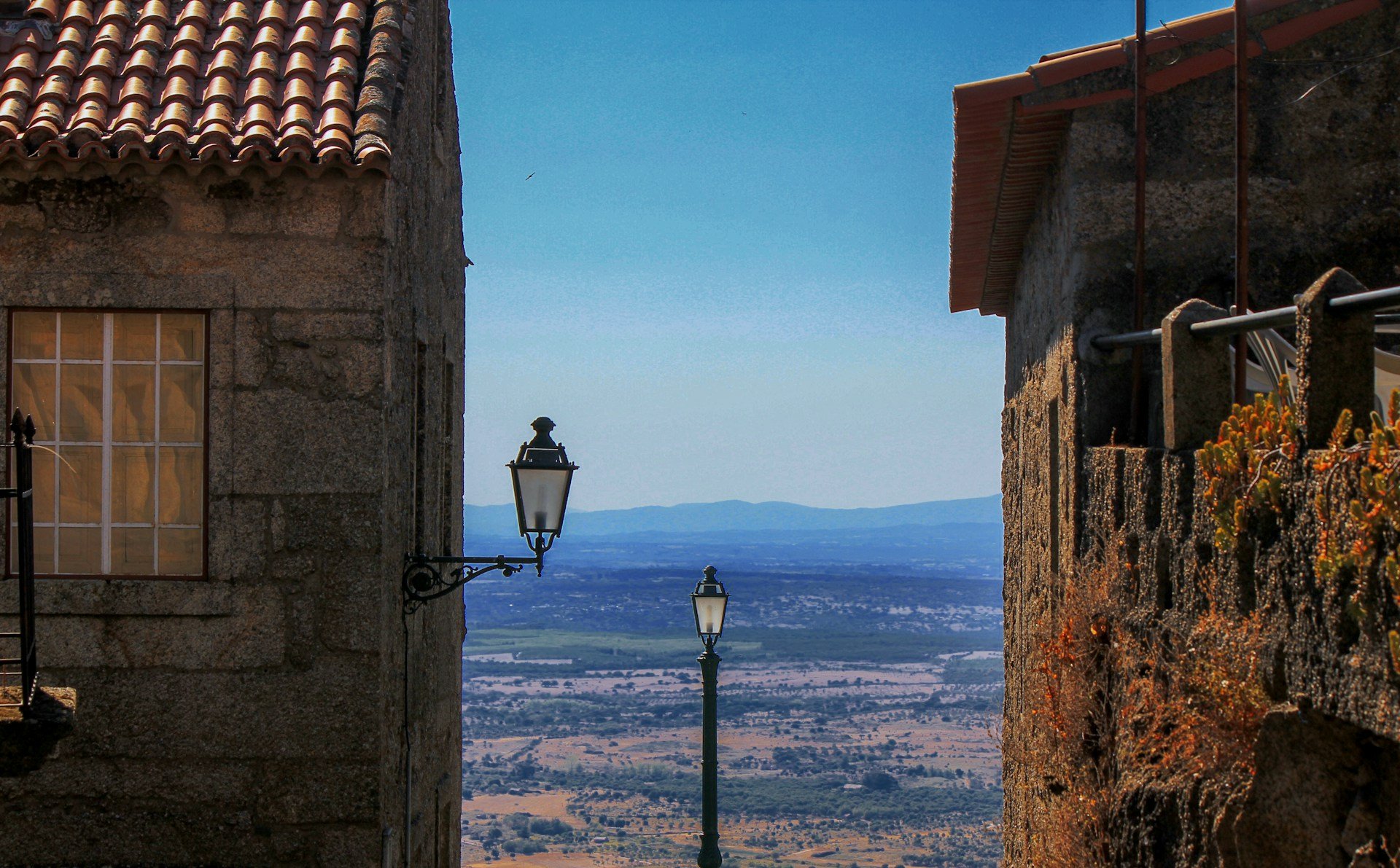
Since we’re in Castelo Branco, why not visit Monsanto as well? It’s a small village known as “the most Portuguese village in Portugal,” a title awarded in 1938 by the government. In other words, the village hasn’t changed much during these past few hundred years, so it feels like you’re breathing history, not to mention the fact that Monsanto’s earliest traces of man date back to the Early Stone Age!
Monsanto’s most striking feature is its unique architecture, with houses squeezed between, under, and even in giant boulders, and tiny, intricate streets lined with red-roofed houses.
5. Monsaraz
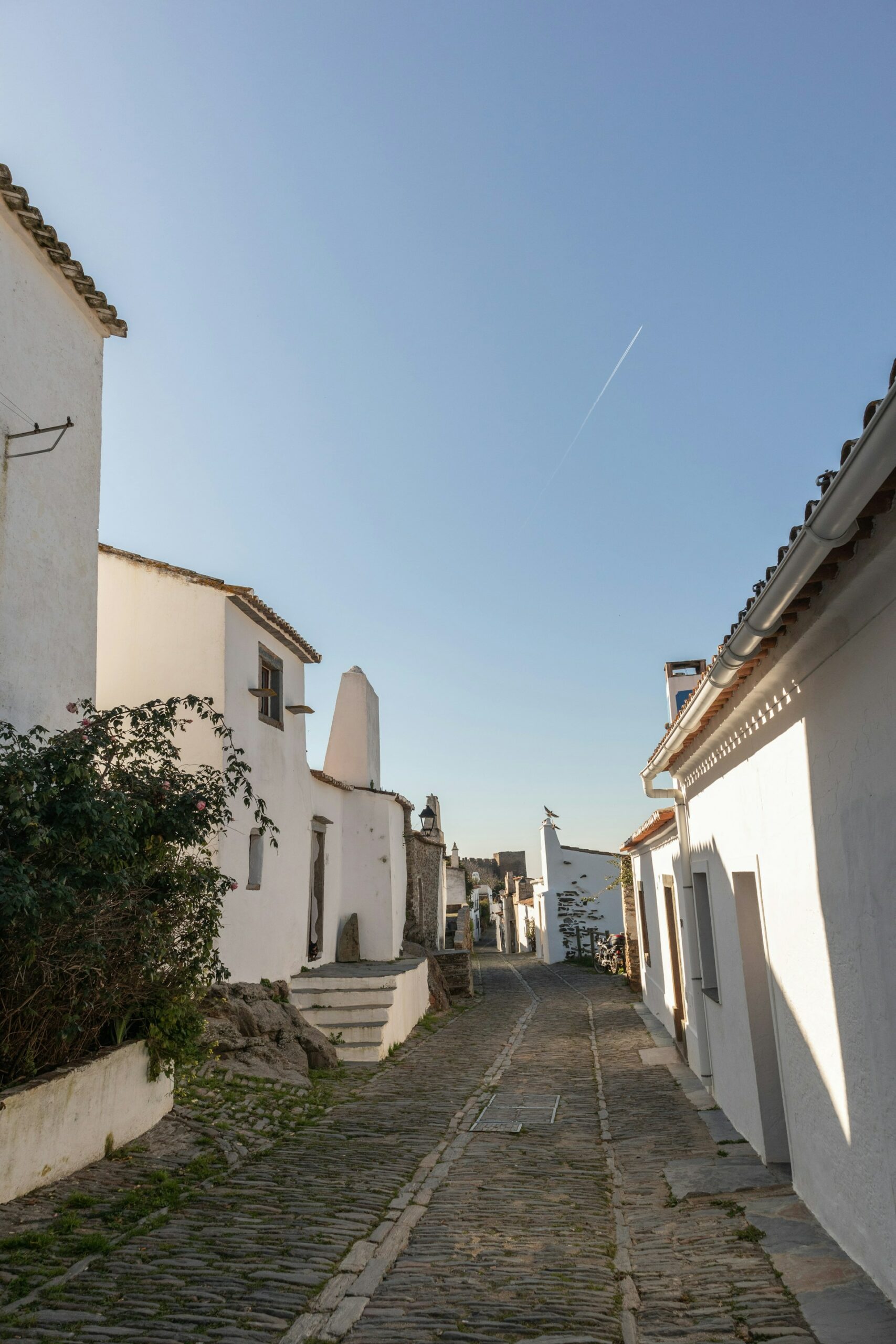
Next, we’re headed to the Alentejo region, looking for Monsaraz, a medieval village perched atop a hill overlooking the Guadiana River and the Spanish border. Its history is incredibly rich, as the region was once occupied by Arabs, Visigoths, Jews, Mozarabs, and Christians.
The star of the village is the impressive 14th-century Monsaraz Castle, which opens to the surrounding countryside and the Alqueva Lake – the largest artificial lake in Western Europe. Besides serving as a military defense, the castle was also a bullfighting ring in the 19th century, so there’s definitely much to learn about it!
While walking to the castle, you’ll unravel the medieval treasures around the city, as the region is famous for its well-preserved architecture – those picturesque views of whitewashed houses lining narrow cobblestone streets will likely stay with you long after you return home.
6. Talasnal
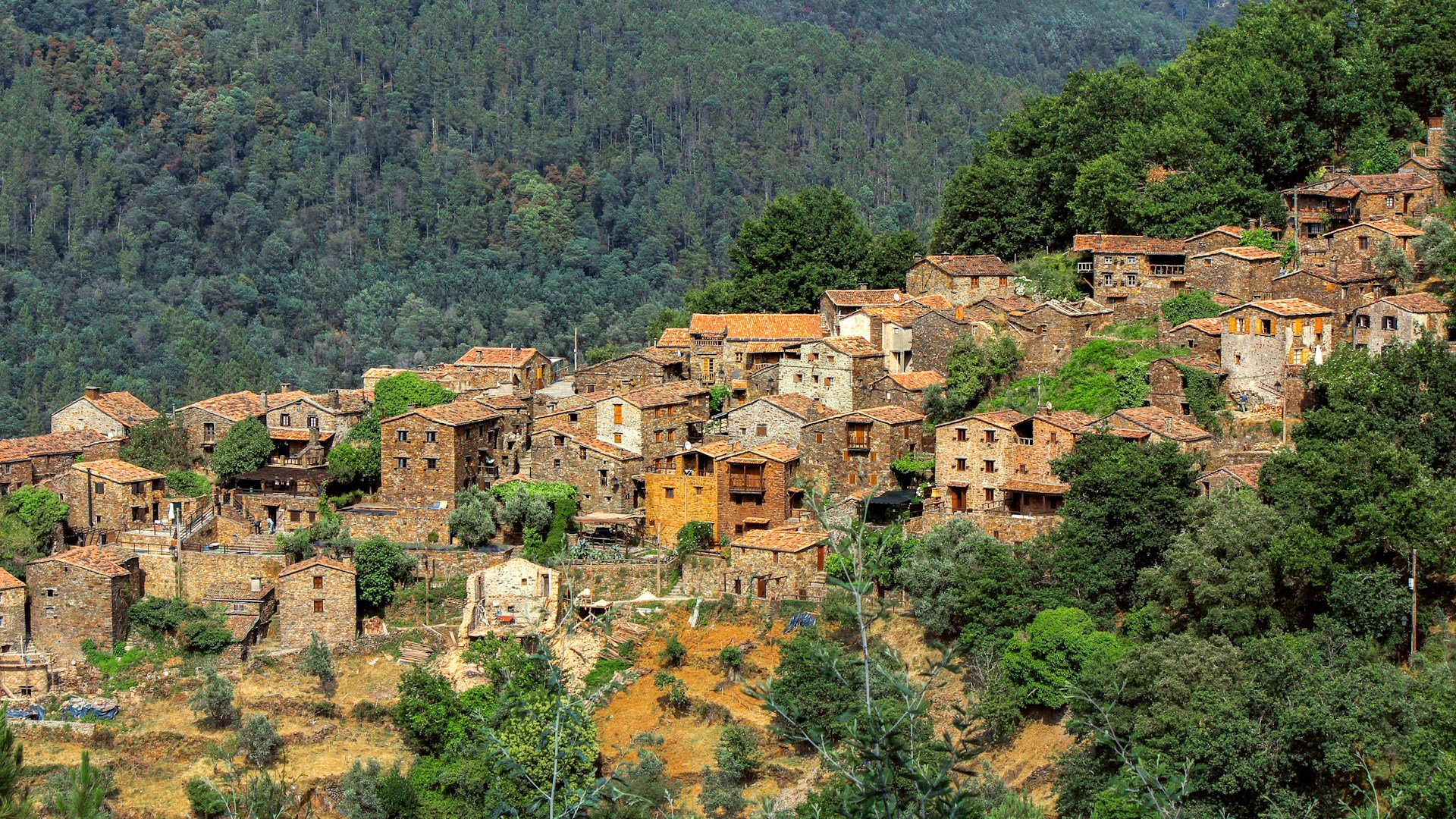
Central Portugal brings another treasure – Talasnal, a small schist village nestled in the Serra da Lousã mountain range. It was likely established in the 17th century but ended up being almost abandoned by the mid-20th century. In fact, there were only two permanent residents in Talasnal in 1981. Thanks to rural tourism, people returned to this unique village.
Today, Talasnal is known for its traditional schist architecture, with houses built from local slate-like stone that look striking in contrast with the green vines of the region. The village offers stunning views of the Serra da Lousã and is known for its tranquil atmosphere and eco-tourism. Most of the traditional houses in the village have become guest houses – this way, you can relish a truly authentic experience of living in rural Portugal.
The village is also surrounded by a network of hiking trails, so if you’re a hiking enthusiast, give it a go!
7. Lindoso
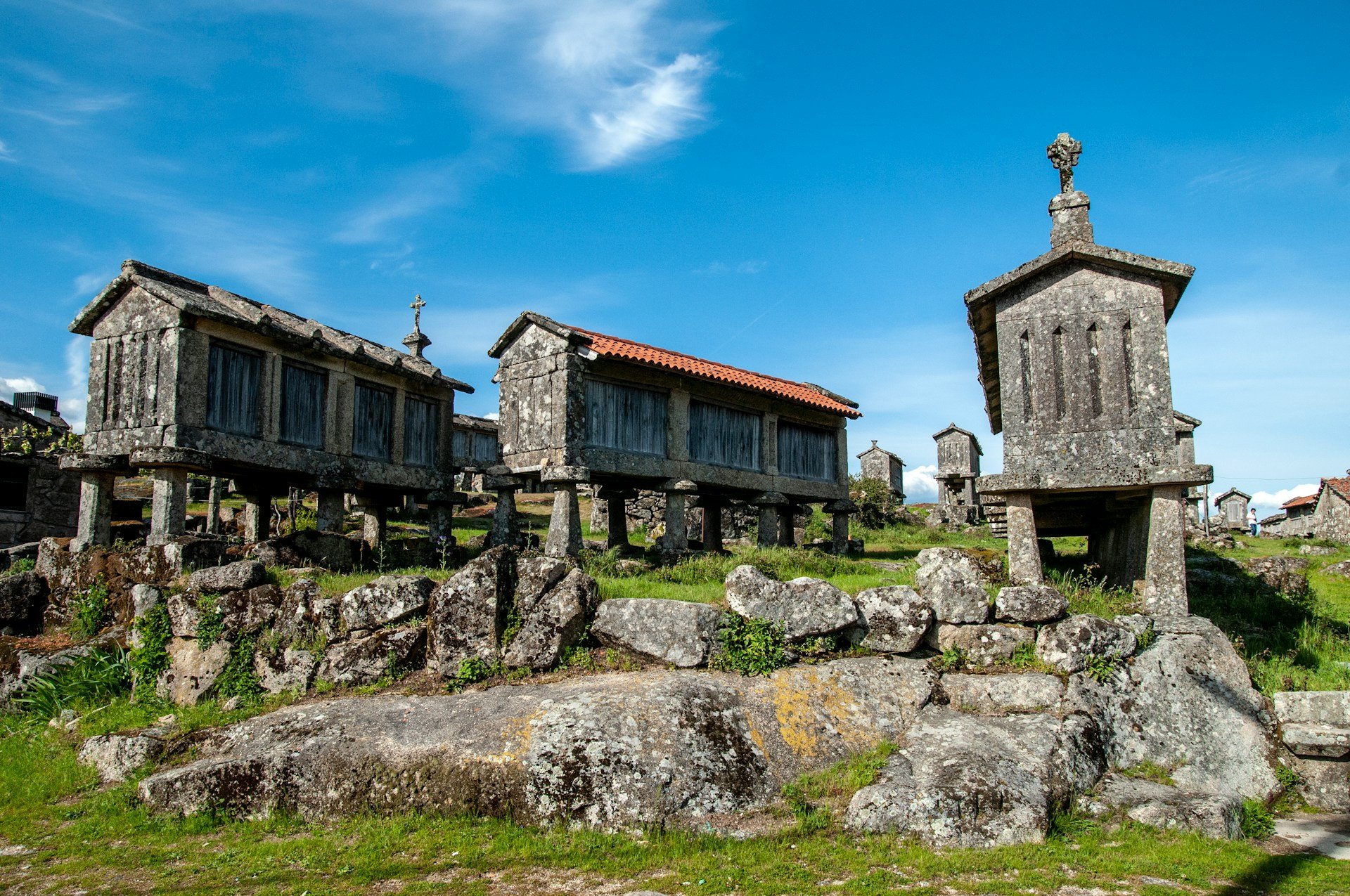
Lindoso is a small village located in the far north of Portugal, in the municipality of Ponte da Barca, within the Peneda-Gerês National Park. The village’s history is closely tied to its strategic border location, as evidenced by the well-preserved Lindoso Castle, which dates back to the 13th century.
Lindoso is also famous for its collection of espigueiros, traditional granaries built on granite slabs – quite an impressive open-air museum! The village is deeply rooted in rural traditions, so you’ll undoubtedly witness the authentic Portuguese country lifestyle!
In other words, this destination is for history- and culture-oriented travelers who want to explore continental Portugal rather than the coastal areas.
8. Soajo
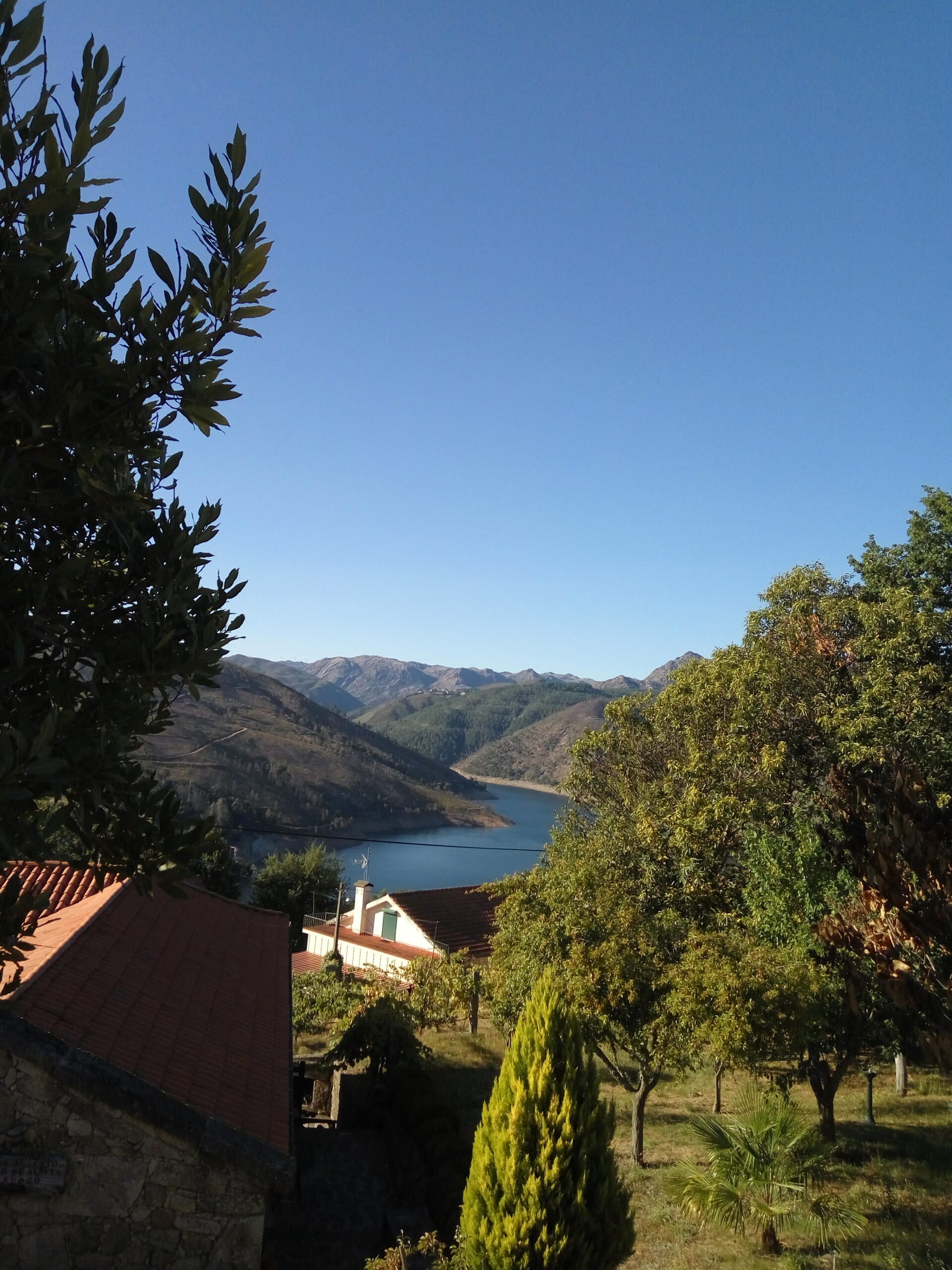
If you enjoyed your trip to Lindoso, don’t miss out on visiting Soajo as well, which is only 20 minutes away by car. It’s another small village in the Peneda-Gerês National Park whose history dates back to the Neolithic period as indicated by evidence of human settlement in the area.
Today, it has only around 700 inhabitants, but quite a lot of tourists pass by, unraveling its charm! The village is famous for its unique collection of espigueiros, which have become a symbol of the region’s rural heritage.
Soajo is also an excellent base for hiking in the national park, offering stunning views of the surrounding mountains and valleys.
9. Varzea
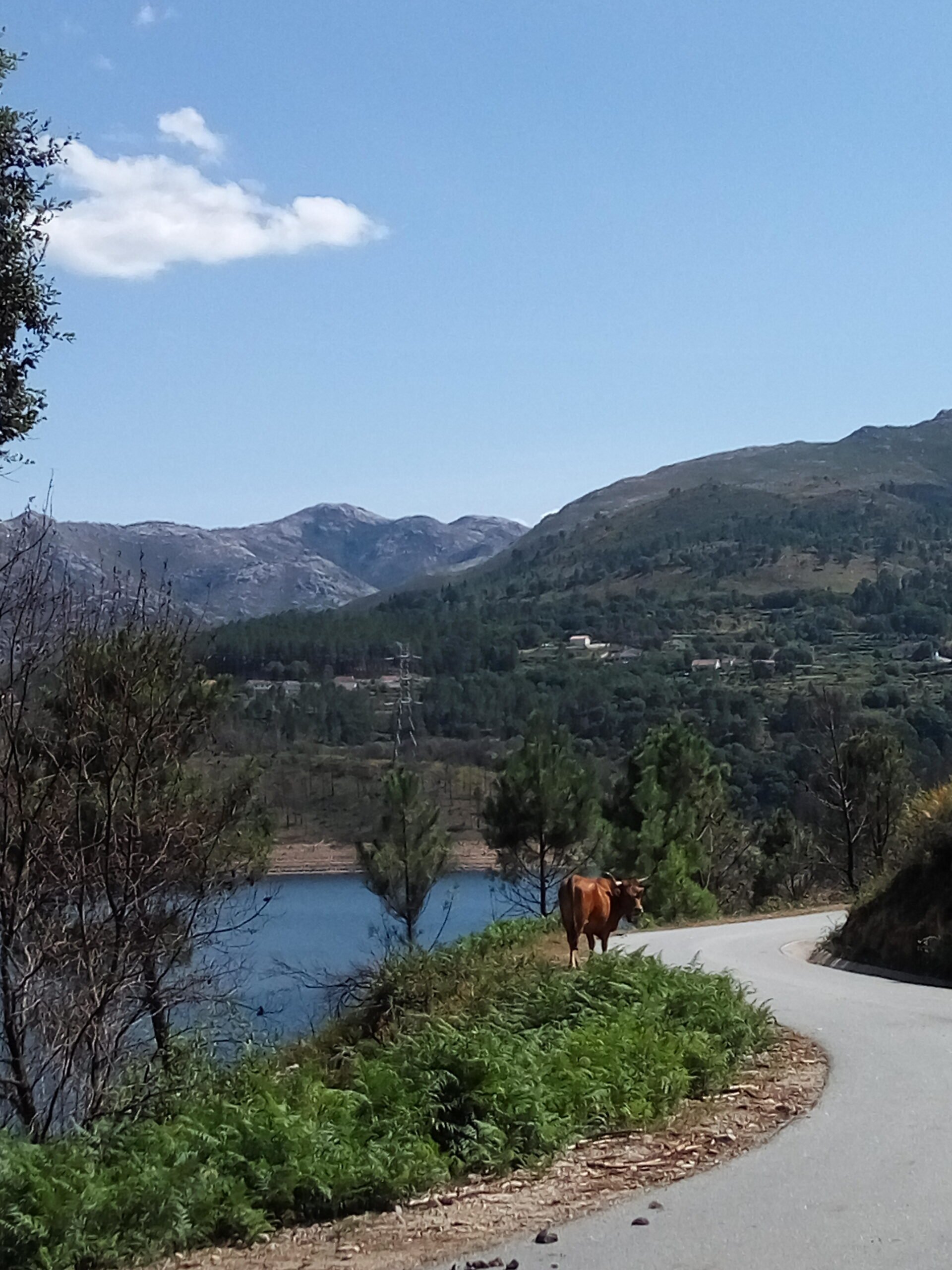
While in Soajo, make sure to check out Várzea. It’s a small village located 20 minutes away by car from Soajo. You probably won’t be able to stay there overnight, as there likely are no hotels, but you can spend a few hours there – it’s 100% worth it if you’re on the lookout for hidden gems in Portugal.
The village has no roads for cars – we’re not kidding! You’ll have to park somewhere outside the village and walk around it on foot. It is filled with stone houses preserved for hundreds of years. In addition, it’s located right at the border with Spain, overlooking the Limia River, in a mountainous area.
Even the road to Várzea is charming – you’ll likely stop every 5 minutes to enjoy the peace, the tranquility, the stunning views! Or you’ll stop to allow the cows or horses to enjoy their walk in peace!
If you can stay in Várzea after the sunset, you’ll see something truly spectacular – millions of stars shining as bright as ever!
It’s important to note that Várzea, being a small village, has limited amenities, so come prepared for the ultimate rustic experience typical of remote mountain communities in northern Portugal.
10. Elvas
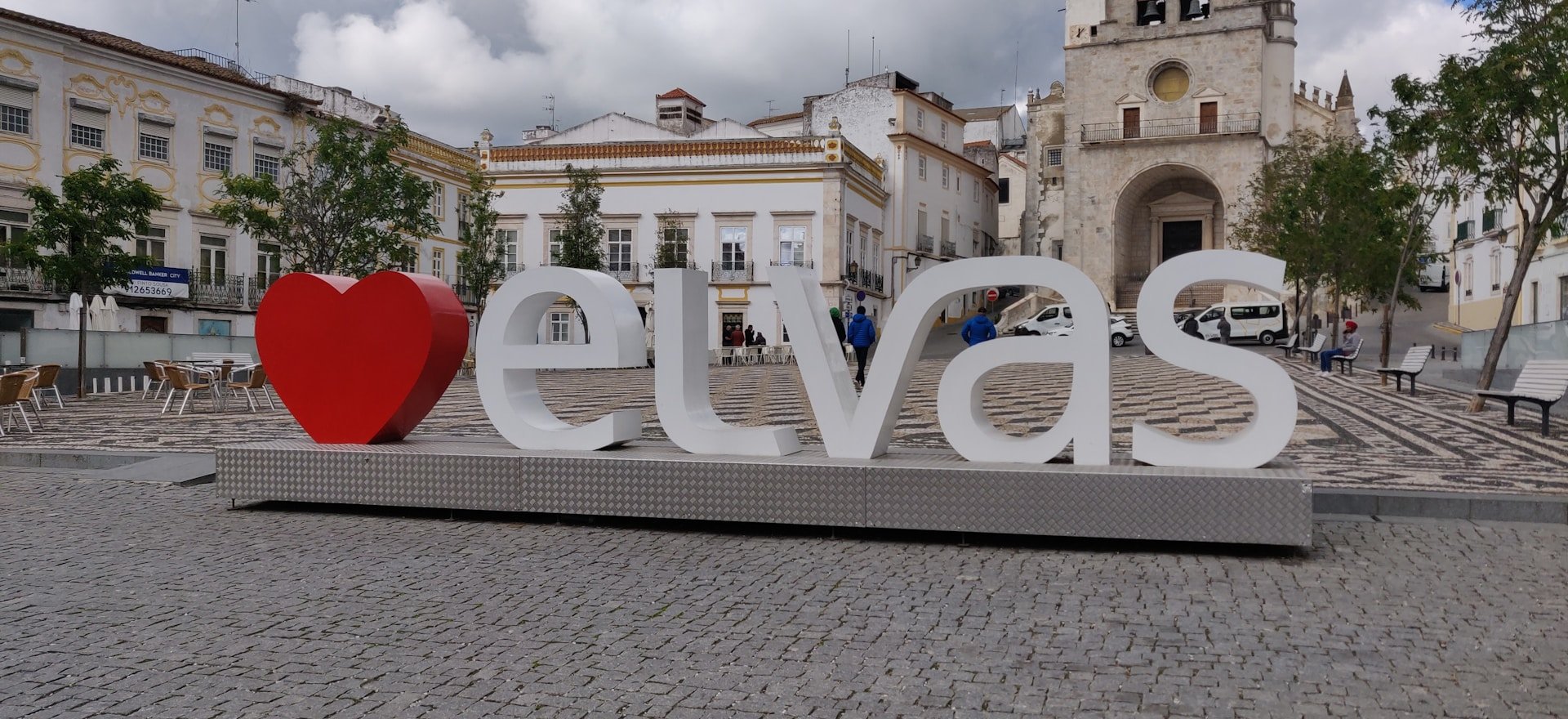
Yet another incredible city in the Alentejo region that doesn’t always reach the must-visit list of locals and tourists, although it definitely deserves it, is Elvas, a historic city near the Spanish border. Its strategic location made it a crucial defensive outpost throughout Portuguese history, especially during the Peninsular War.
While you’re in Elvas, make sure to check out the Nossa Senhora da Graca fort with its star-shaped walls and the Amoreira Aqueduct, a 16th-century marvel stretching over 7 kilometers. You can also visit the Fabrica-Museu da Ameixa de Elvas to learn more about the region’s preserved fruit traditions. It is the oldest factory of this kind that is still in operation.
11. Lamego
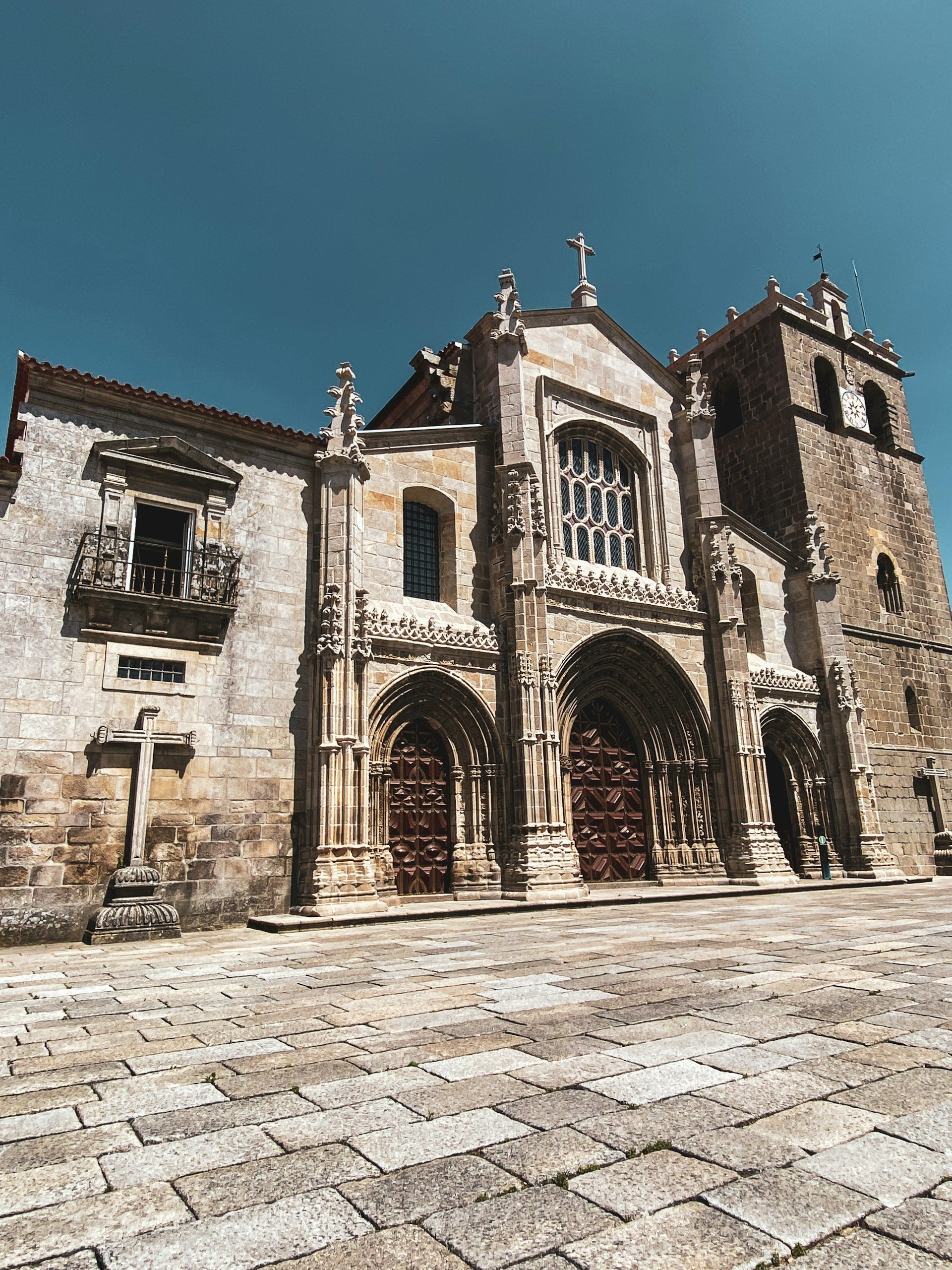
Nestled in the Viseu District, Lamego is a Portuguese treasure! Although generally known for its wine production, the city is truly charming thanks to its architecture and history that dates back to the Roman era.
While you’re in Lamego, make sure to visit the Nossa Senhora dos Remédios Sanctuary – a must-see landmark in northern Portugal. Its impressive baroque staircase of 686 steps, its Rococo-Baroque facade, and the incredible azulejos make for awe-inspiring views!
If you happen to visit Lamego in late August or early September, you’ll witness the Festival of Nossa Senhora dos Remedios and its various religious processions, concerts, parades of allegorical floats, exhibitions, and dancing.
12. Tavira
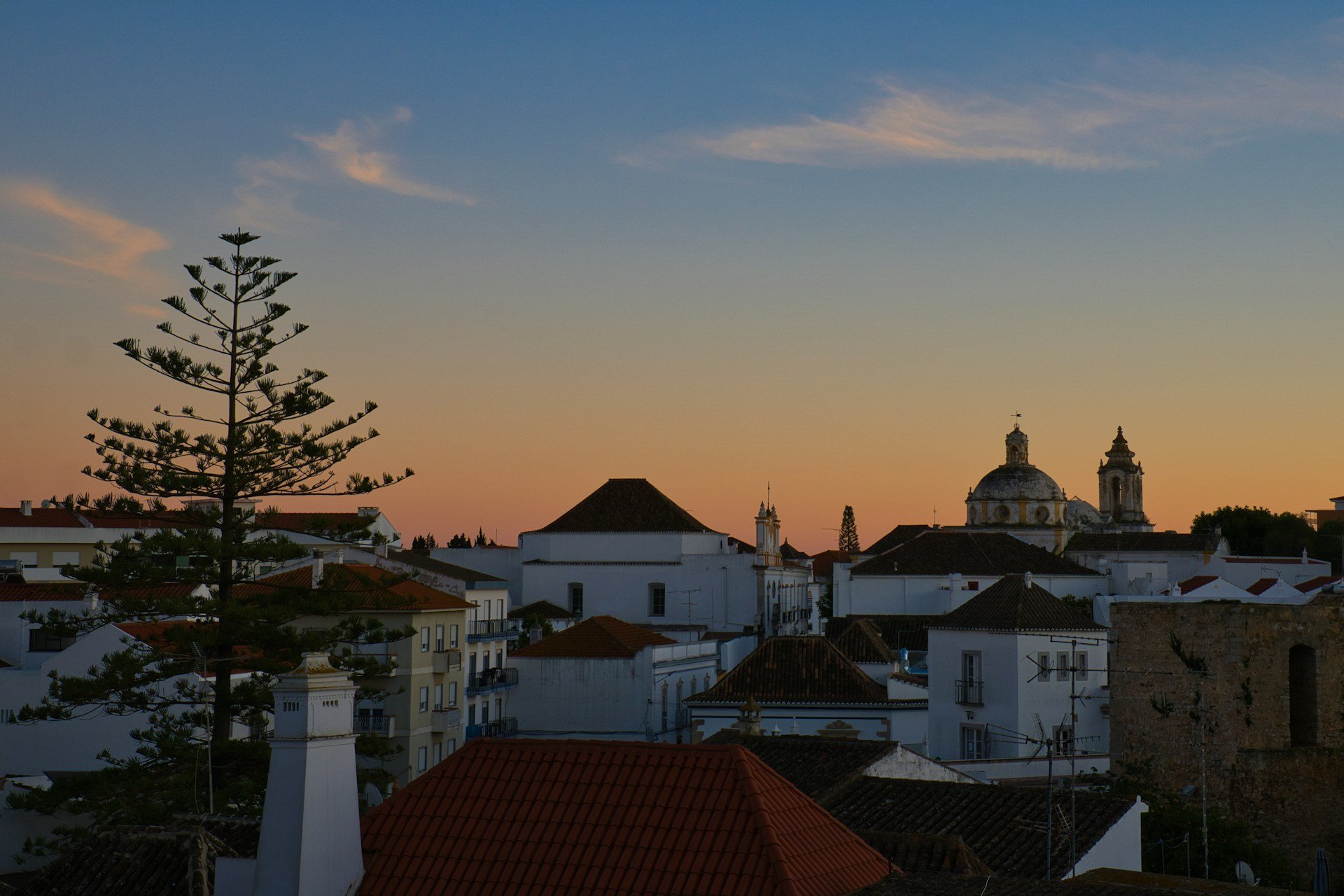
Now we’re headed to the south of Portugal, the east of Algarve, Portugal’s top beach destination. Our next stop is Tavira, a charming town with a rich history dating back to the late Bronze Age.
You should check the iconic 7-arched “Roman Bridge” crossing the Gilão River. Despite its name, however, the bridge isn’t Roman but Moorish.
Tavira is also an excellent destination for anyone looking for religious Portuguese landmarks – the town has more than 20 religious buildings, each with unique architectural styles and a long-standing history.
If you do visit Tavira, make sure to take the ferry or pass the floating bridge to Isla de Tavira, which is part of the Ria Formosa Natural Wetlands Park. The beaches on the Tavira Island stretch for 11 kilometers, being among the most sought-after beaches in the Algarve.
13. Marvão
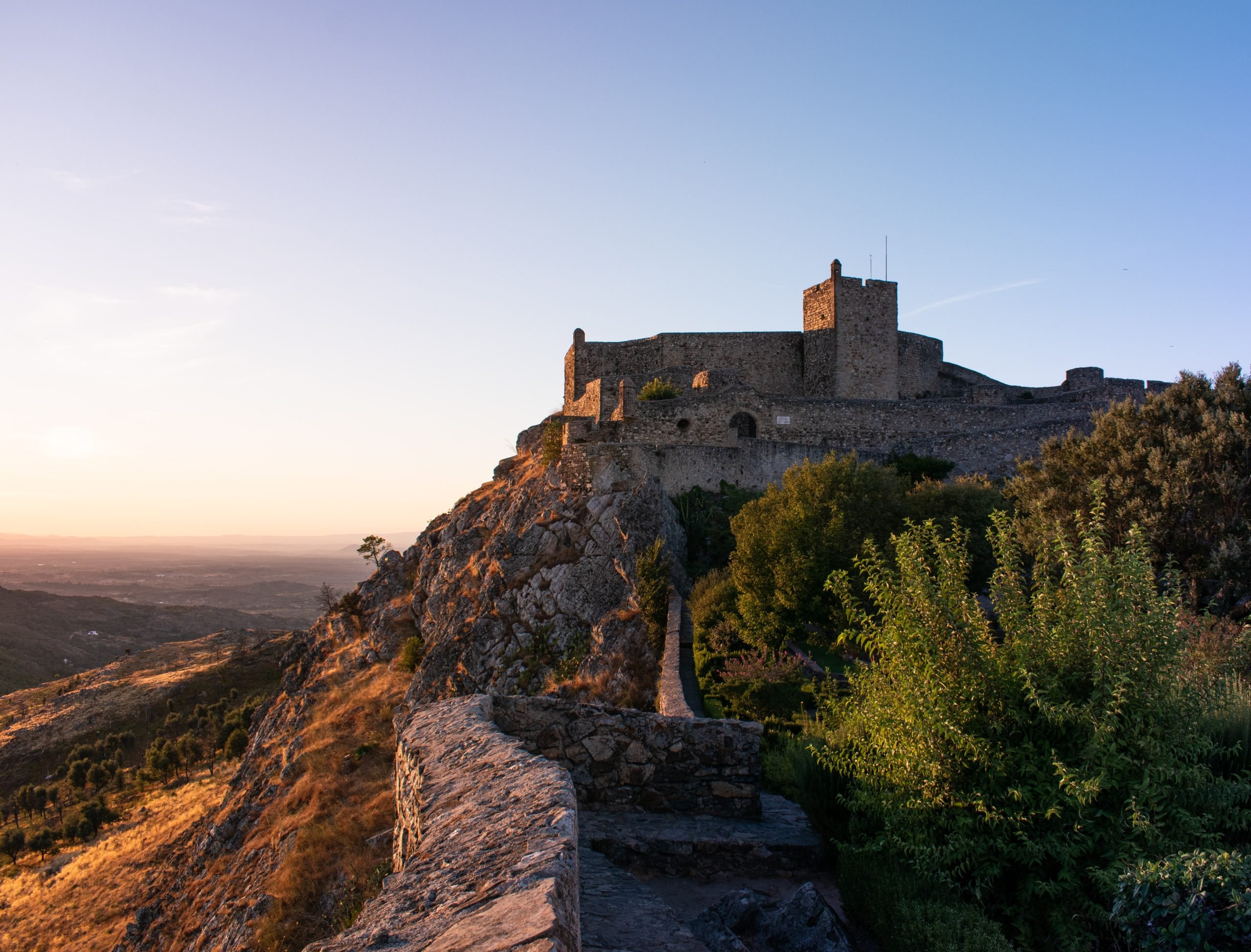
Marvão is a small medieval town in the Portalegre District. The town’s crowning glory is the well-preserved Marvão Castle built in the 13th century that offers panoramic views of the city and the surrounding hills and valleys.
Marvão is also a dream destination for anthropologists or enthusiasts who want to discover more about prehistoric settlements in the region we now call Portugal. There are several burial chambers and carved tombs indicating that small farming settlements once lived there.
Furthermore, the narrow, winding streets of the old town are lined with white houses with red roofs. If you happen to visit it in November, you may be lucky enough to enjoy the Feira da Castanha which celebrates the region’s chestnuts. In 2022, the Marvão Council bought 1,500 liters of wine and 4,500 kilos of chestnuts for this festival!
14. Piódão
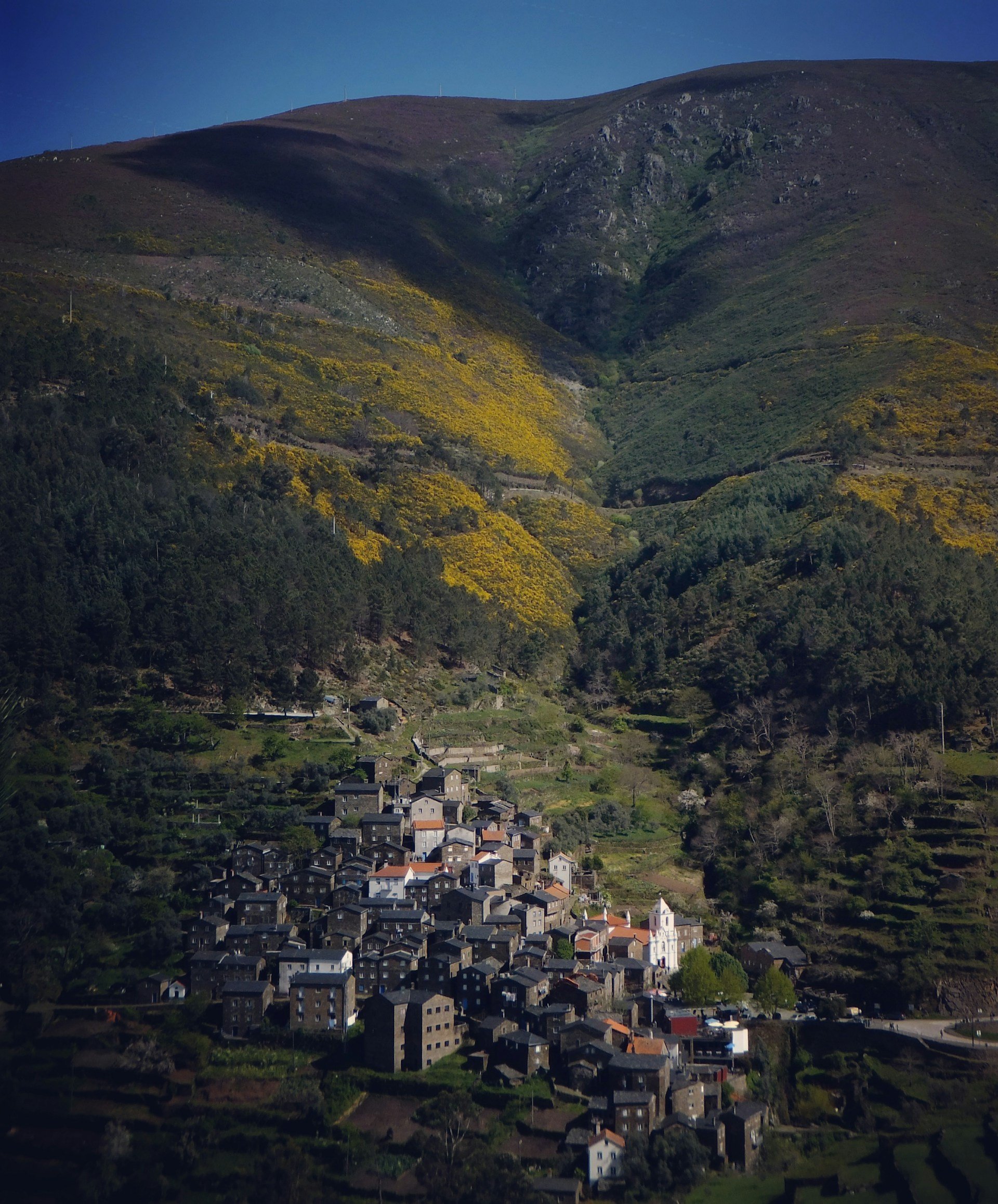
Do you plan to visit Coimbra? If so, reserve a few hours for Piódão, a picturesque village located an hour away from Coimbra by car. The village is hidden in the Serra de Açor area, a protected landscape region surrounded by breathtaking views you’ll never forget!
Historically, it was an isolated community, which contributed to the preservation of its unique architecture and way of life. The village is famous for its schist houses with blue windows and doors – it is believed that the local store had only blue paint to sell at the time, so locals had to use it for their houses. Luckily, they still do, and the design is as charming as ever!
If you visit Piódão, you’ll definitely notice the whitewashed building that stands out among the other gray schist buildings – it’s the church dedicated to Our Lady of the Conception built in the early 19th century.
Oh, and here’s another interesting fact – it is believed that Piódão was once the final destination of fugitives from justice because of its hidden location. Historians believe that the murderers of D. Ines de Castro, the lover of King Pedro I of Portugal, hid in Piódão after committing the violent act.
15. Batalha and Mira de Aire
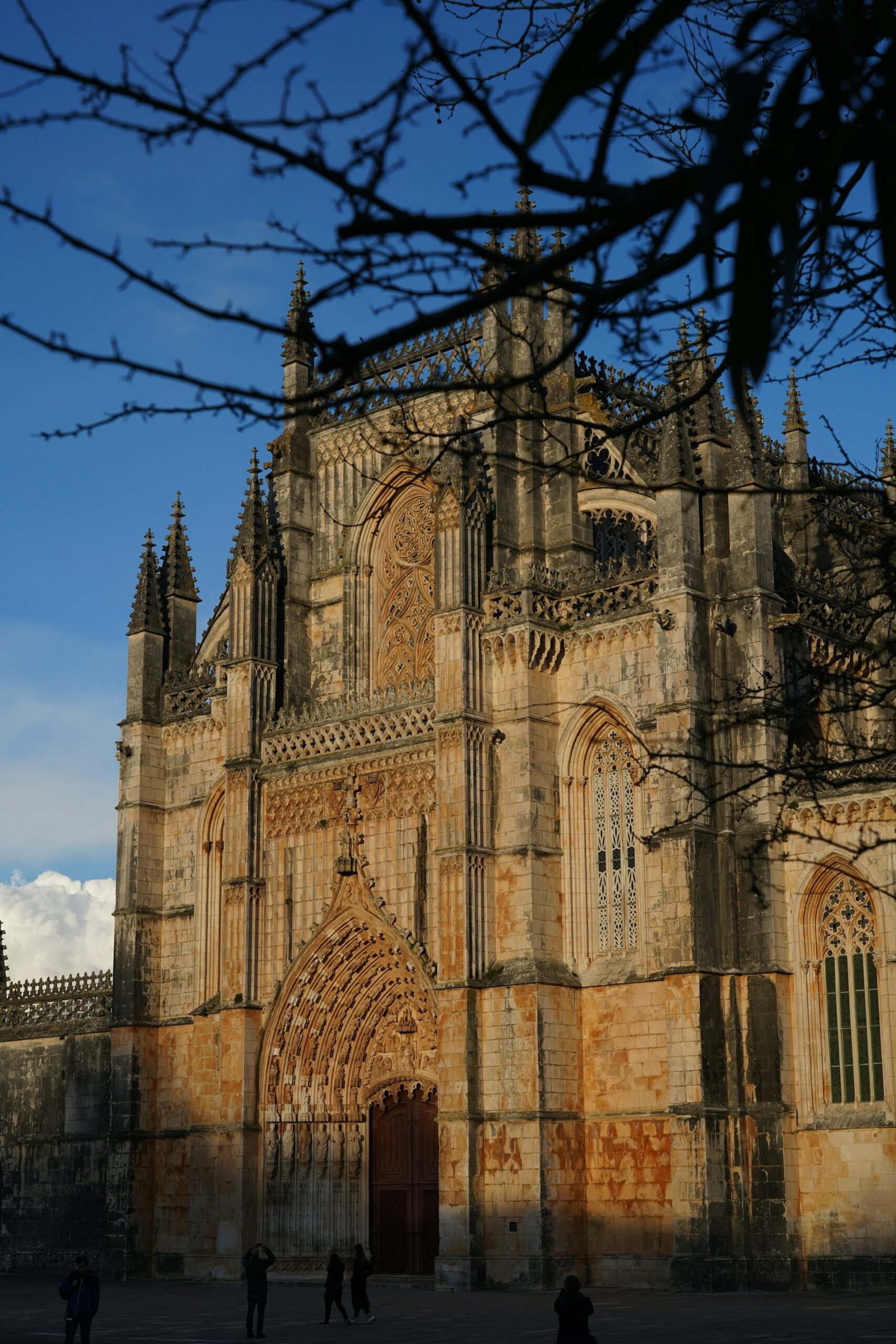
Batalha is a historic town located in the district of Leiria. Batalha means “battle” in Portuguese and refers to the 1385 Battle of Aljubarrota, as the town was founded to pay homage to the Portuguese victory.
The town’s crowning glory is the Monastery of Batalha, a masterpiece of Gothic and Manueline architecture and a UNESCO World Heritage site.
If you decide to visit Batalha, make sure to check Mira de Aire too. It takes just 30 minutes by car to get there. The Grutas de Mira de Aire (Mira de Aire Caves) is an incredible geological landmark in Portugal, welcoming more than 8 million visitors. It’s the largest tourist cave in the country – if you enjoy such trips, you definitely won’t regret it!
16. Fatima
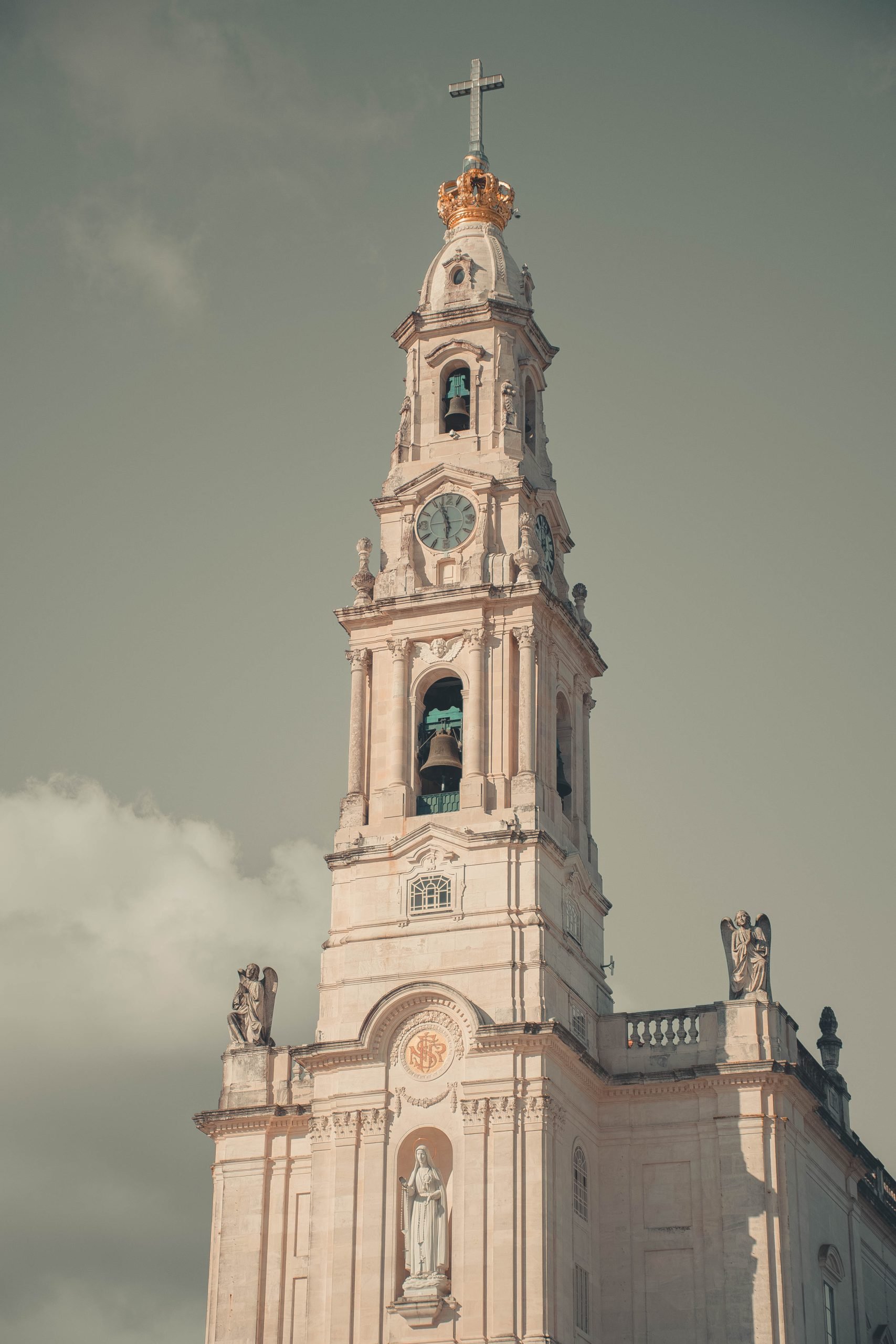
Fátima is a rather small city in central Portugal that greets eight million visitors yearly. The secret? It is one of Europe’s largest and most renowned Catholic sites. The city is associated with Our Lady of Fatima due to several Marian apparitions supposedly witnessed by three children.
The Sanctuary of Our Lady of Fatima was built to commemorate these Apparitions – it consists of the Basilica of Our Lady of the Rosary surrounded by several religious structures and the Chapel of the Lausperene, which is a great oak tree; it is said that the Marian Apparitions occurred near that tree.
Many pilgrims visit Fatima on May 13th and October 13th, the days that commemorate the Marian Apparitions.
17. Peniche
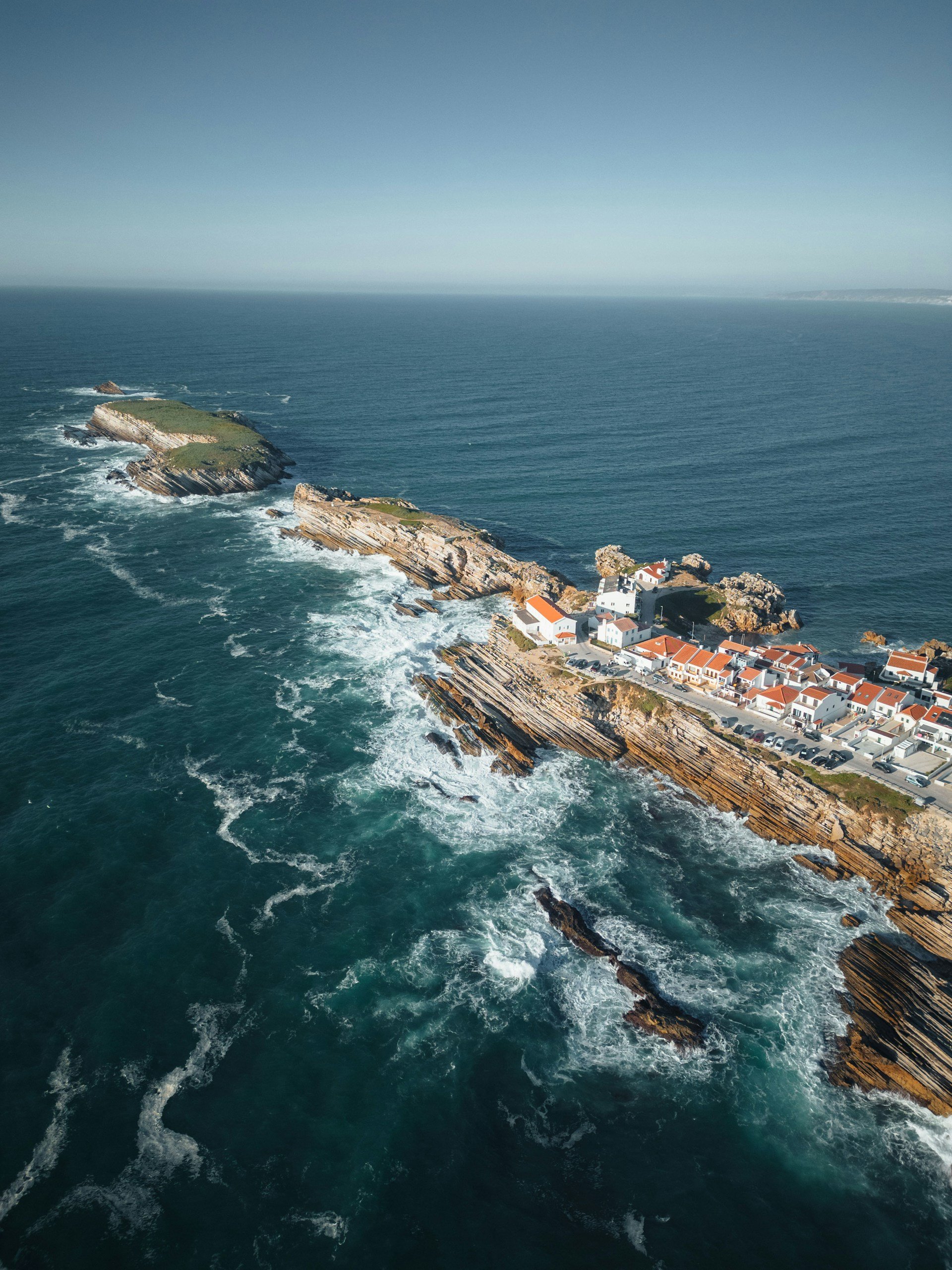
Looking for a coastal destination in Portugal? Forget about Lisbon! Well, you actually can’t forget about it; it is, after all, the capital and one of the most beautiful cities in the country! But let’s pretend for a minute that we’ve already visited Lisbon and the coastal areas surrounding it and want to travel north. In this case, we’re headed to Peniche, a city built on a rocky peninsula known for its long beaches and incredible waves.
One major landmark you should not miss out on is the Peniche Fortress, which provided coastal defense and served as a prison for communists during the 20th century. If you’re in Peniche, make sure to also visit the incredible Berlengas Islands, which are only 10 km offshore from the city.

